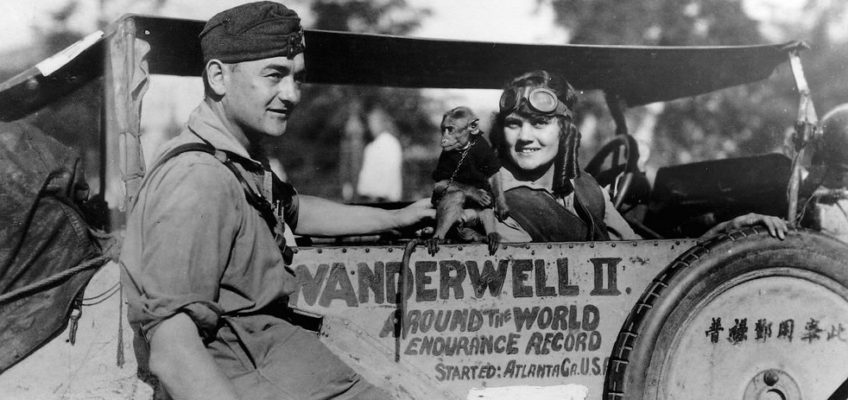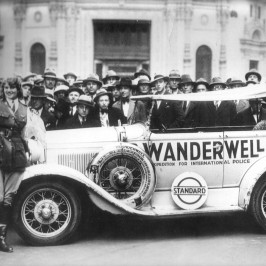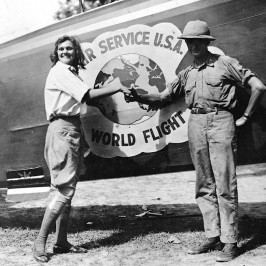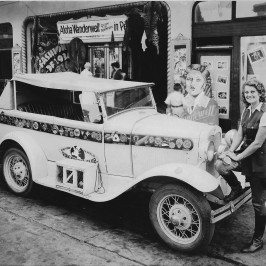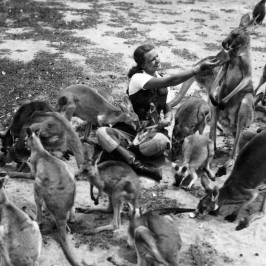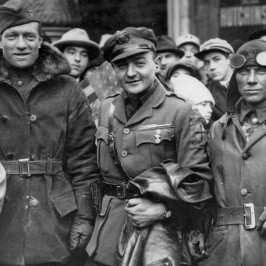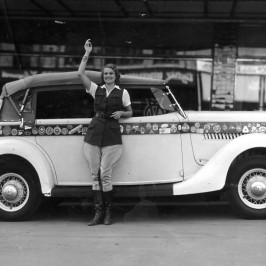A woman by the remarkable name of Aloha Wanderwell Baker has lived in the same apartment on Lido Isle in Newport Beach since 1949. Her living-room picture window offers a view of Newport Bay. But in her den, with its stacks of filing cabinets, the view is even more expansive because it encompasses the whole world, in hundreds of photographs and frayed clippings documenting some of the more exciting–and least known–adventures of the early 20th Century.
In 1922–when Baker was 16–she joined the expedition of a Polish adventurer whose name was so difficult to pronounce in English that he adopted “Wanderwell.” His mission was to drive a Model T Ford around the world. Only Baker stayed with him through the entire trip, which ended triumphantly in Detroit three years later. For Baker, it was the start of a marriage, a career on the lecture platform and a nomadic kind of life that didn’t end until she and her second husband, Walter Baker, settled in Newport Beach.
Today, a tall, lean, white-haired woman with the courtly bearing of her English background, a firm handshake, eyes that both dance and penetrate, remarkable energy and total recall, Baker is finishing a book about her travels while living a life of quiet refinement with her husband who “allows my tribal customs and serves me tea twice a day.”
She came out of an unlikely environment for such perilous adventures. Her parents were British citizens who migrated to Canada in the early 1900s out of a romantic longing to carve a livelihood out of the Canadian prairies. A cholera epidemic drove them to Vancouver, and the start of World War I drove them home, “where my father went back to his regiment.”
But this love of the prairie conditioned Baker and her mother the rest of their lives. It was also responsible for the unusual name. “It has nothing to do with Hawaii,” its owner says today. “Mother was of the gypsy spirit and thought Aloha was a pretty word.”
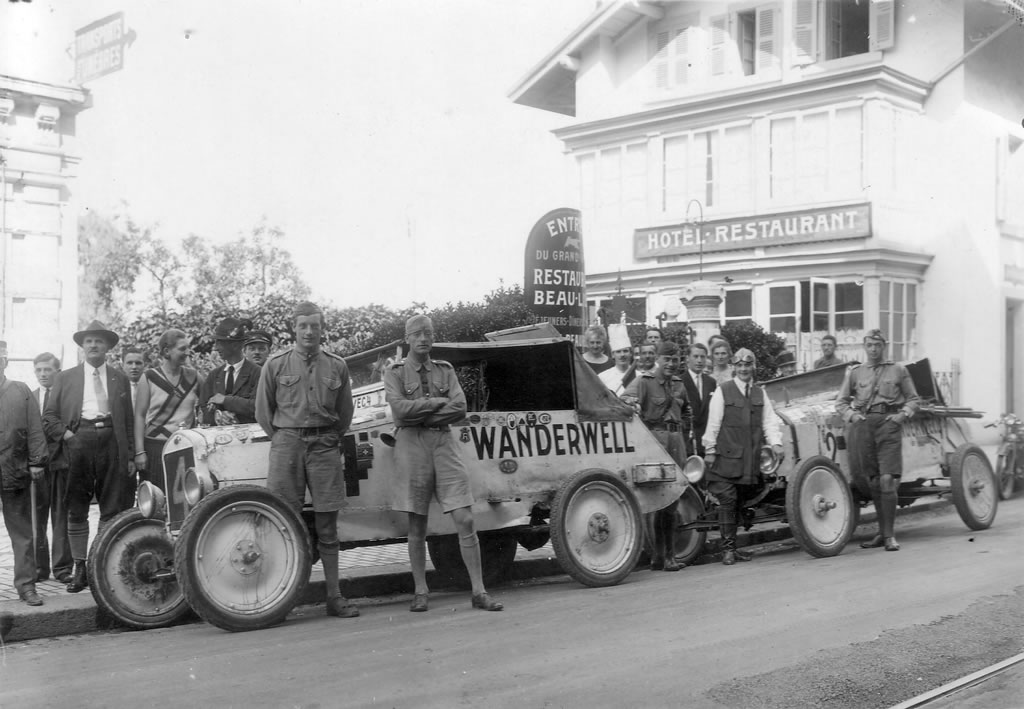 Her father was killed in World War I, and after the war, Baker’s mother put her two daughters into a convent school in Belgium while she searched for her husband’s body. “It was never found, and Mother thought he might come back. But after two years, she finally gave up and we moved to the south of France.”
Her father was killed in World War I, and after the war, Baker’s mother put her two daughters into a convent school in Belgium while she searched for her husband’s body. “It was never found, and Mother thought he might come back. But after two years, she finally gave up and we moved to the south of France.”
There Baker grew up and grew bored with school. “I was very big for my age. I haven’t grown since I was 13, and I was taken as an adult.” One of the people who took her as an adult was a French war ace who courted her so enthusiastically that Baker’s mother took her back to England to “meet some proper boys.” One of them asked to marry her, but she was too young to announce an engagement, so it was agreed that she was “spoken for.” With that mission accomplished, the family returned to Nice.
That’s where Baker met Capt. Walter Wanderwell. He was on the first leg of his journey around the world by car and was making his expenses by lecturing en route. He was 27 then, an “enormously handsome” Pole who had run away to sea as a small boy and had seen virtually the entire world when his ship put in at Baltimore in World War I. Cap–as Baker was to know him–left his ship and began to hike across the United States, paying his way by giving talks in churches about the situation in Europe. He actually became fluent in English by using it from the lecture platform.
He was in Atlanta when the United States entered World War I and was immediately looked on with suspicion as a foreigner of dubious leanings. He spent several months in jail while authorities checked out his background. When he got out, he joined the Volunteers of America (an organization helping the Armed Services in a variety of ways) and rose to the rank of captain. He had already adopted “Wanderwell” on his hiking tour, so he became–for the rest of his life–Capt. Wanderwell.
After the war, he conceived the idea of an auto trip around the world. He discussed the project with Henry Ford, but declined Ford’s sponsorship so he could make his own decisions. He had a special steel-plate model built on a Ford touring car chassis and set out with a crew of four from Detroit. He had already been to England when Baker caught up with him in Nice. She was enchanted and managed to meet the captain after his lecture. He told her they needed an interpreter fluent in both French and English and asked if she would be interested. She said she would; she also told him she was 16.
“It took mother four weeks, but the gypsy in her finally prevailed and she agreed. Cap told me there would always be another woman in the party, and he lived up to that whenever he could. We took on interpreters in every country, so the cast kept changing. I was the only one who stayed with him through the whole trip.”
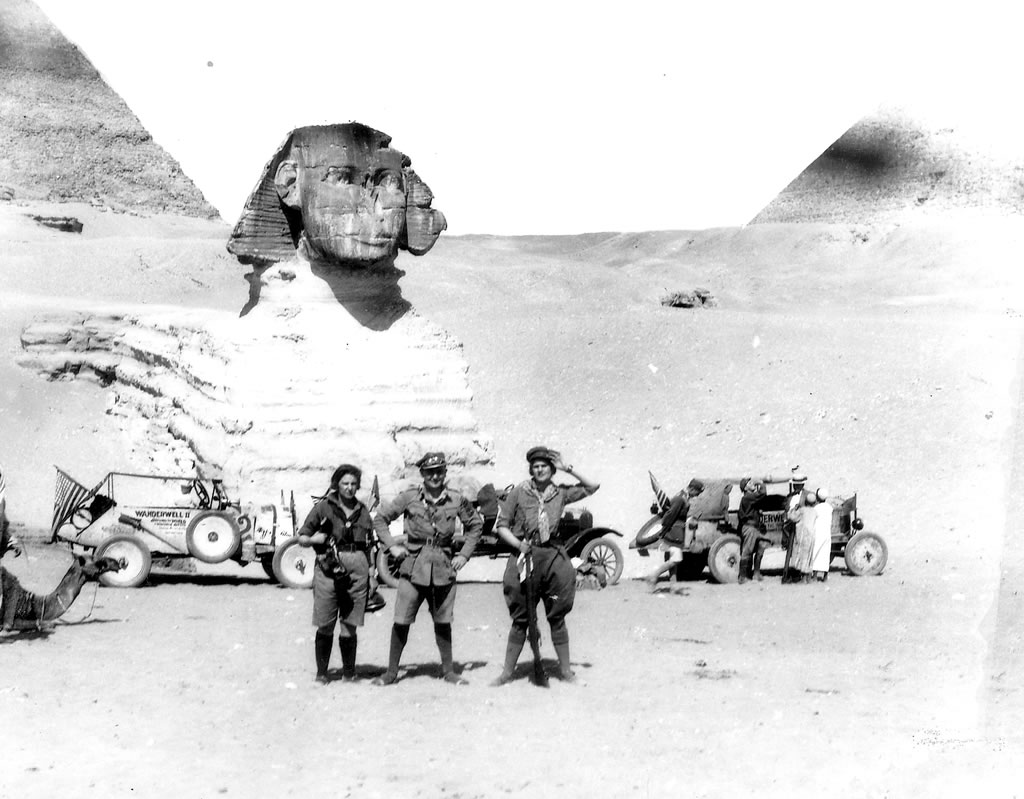 Baker has a beautifully crafted map showing their route–and also the route of a subsequent round-the-world trip 10 years later. “There’s no real adventuring in trips these days,” she says. “Everything is planned now. We planned about five minutes ahead. When things go wrong, that’s an adventure.”
Baker has a beautifully crafted map showing their route–and also the route of a subsequent round-the-world trip 10 years later. “There’s no real adventuring in trips these days,” she says. “Everything is planned now. We planned about five minutes ahead. When things go wrong, that’s an adventure.”
She offers two examples. The first expedition left Egypt with six people and two cars to take a ship across to Aden in the spring of 1924. (Wanderwell had built a second car on a Model T ambulance chassis in France, to serve as a tow car and backup.) Passports were a sometime thing in those days, and among the expeditioners only Wanderwell and Baker owned them–and Baker had inadvertently left hers in Egypt. She was assured by wireless that it would be sent over to Aden by the next boat.
Aden authorities, however, refused to let anyone–including Baker–land without a passport. Wanderwell went ashore with the two cars while the rest of the group had to return to Egypt. All except Baker. Wanderwell gave her a choice: go home to mother or get off the return ship at its first stop on the coast of North Africa and return to Aden on another ship scheduled to put in there. Baker chose the latter plan instantly.
So she was dropped off in the primitive port city of an Italian colony where she was the only white woman. She found haven in the office of an Italian exporter, but the authorities tracked her down and told her that, without a passport, she would have to post a bond of 1,000 lira (which she didn’t have) or be thrown in jail. The exporter put up the money for her (“I’m sure he thought he was going to get more out of it than he did, and I felt a little sorry for him”), then allowed her to sleep on the roof of his office until her ship arrived and took her to the waiting Wanderwell, who by that time had retrieved her passport.
A few months later, the two of them arrived at a remote Indian river during a monsoon. They had been following oxen tracks, and there was no pedestrian or auto bridge across the river. Only a railroad trestle. Wanderwell hiked across the trestle and found some workers at the other end who agreed to help. In a howling wind and rainstorm, the railroad workers laid planks along the trestle while the two cars inched across. After every few feet, the drivers would have to stop while the planks they had just crossed were retrieved and placed ahead of them. The crossing took several hours, but they made it.
In many areas, there were no roads, only cart tracks. And gasoline was a constant problem. It had to be carried in 5-gallon cans, and when the travelers ran out–which happened several times–they simply would have to wait until someone came along to get more gas for them. But as their trip progressed, they were received with more and more excitement. Page after page in Baker’s scrapbooks show newspaper articles from both round-the-world trips with pictures of Baker–in puttees and khaki–leaning on the hood of their car. She was a beautiful woman who cut a dashing figure and captured the imagination of reporters in a long series of exotic cities.
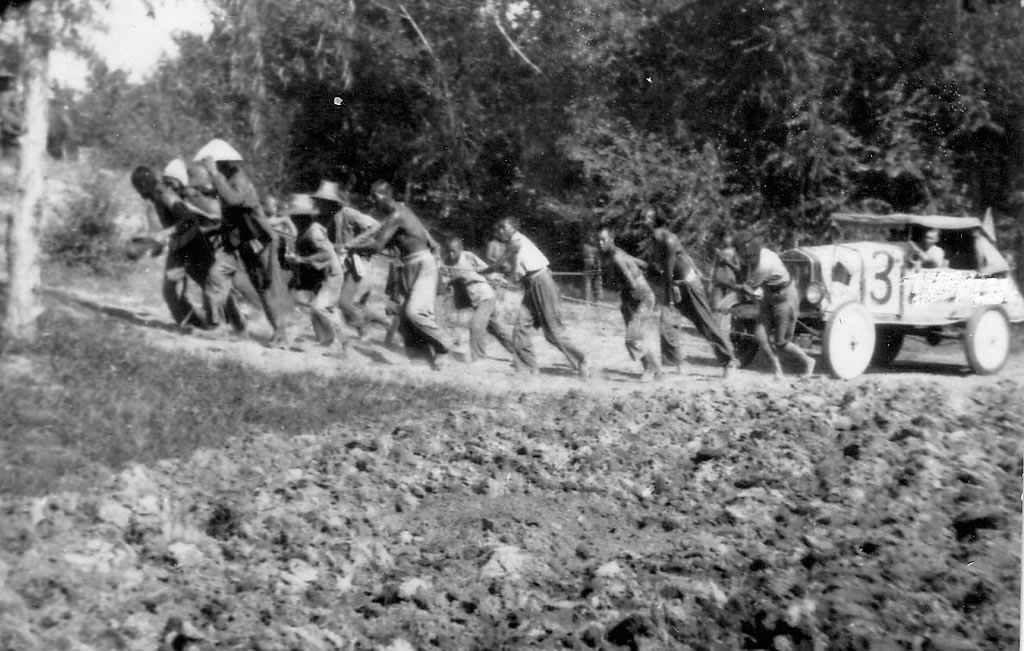 “It was important,” she says today, “that we have continuity in our films, and I provided that.”
“It was important,” she says today, “that we have continuity in our films, and I provided that.”
She also fell in love with Wanderwell “instantly.” They were married in Riverside in 1925, “when I had conveniently aged to 18.” They spent several months on the last leg of their trip in Hollywood, “editing hundreds of feet of unnumbered film that had been processed all over the world.”
The newlyweds opened their domestic lecture tour at the Los Angeles Philharmonic Hall late in 1925, then took it across the country, playing mostly in vaudeville houses to large and enthusiastic crowds. For seven years, this was their life. They took additional auto trips to Africa and Europe, integrating the new film into their lectures. When they returned from a trip to Europe in 1932, they bought a yacht that had been confiscated from rumrunners by the U.S. government. Wanderwell spent much of his time on the yacht while Baker was editing film in Hollywood.
One afternoon later that year, when Wanderwell was aboard ship alone, anchored in San Pedro harbor, an unknown assailant boarded the ship and shot him to death. According to Baker, there were no witnesses and no one was ever charged with the crime. “Apparently they (rumrunners) didn’t like our having their boat,” Baker says today. More than 50 years later, her eyes still get moist, and she is reluctant to talk about Wanderwell’s death.
She was stunned for months but had to make a living, so she finally returned to the lecture circuit. She chose to start in Wyoming, which somehow gave her comfort because the area reminded her of the stories her mother told about the plains. And just as she once had seen Cap Wanderwell on the platform, a young Wyoming rancher saw her and was immediately attracted. His name was Walter Baker, and he was with her constantly until she left Laramie for Denver to fill a lecture booking. He wrote her there and asked if he could join her.
“I wrote this long letter,” Baker recalls, “setting out all the conditions under which he might come. Then I tore it all up and wrote him a post card saying, ‘Come.’ “
They were married in New Orleans in 1933–between shows on the day after Christmas–and have been together for 55 years.
Walter Baker became an expert photographer and moved comfortably into his wife’s adventurous vocation. They repeated the round-the-world auto trip in 1935, taking a new route this time. Once again, their lectures along the way were well received, and at each stop there were newspaper accounts of the adventurous pair. A new element was added, however, when they reached the Orient, near the end of the trip.
“The smell of war,” recalls Aloha Baker, “was everywhere. Japanese businessmen had infiltrated all of the eastern countries. We weren’t allowed to use our car radio in China, and when we anchored at Kobe in Japan, we couldn’t take our cars ashore. There were practice blackouts the whole time we were there, and even a practice air raid where Japanese planes dropped bags of flour, and civil defense crews hurried out to clean up.”
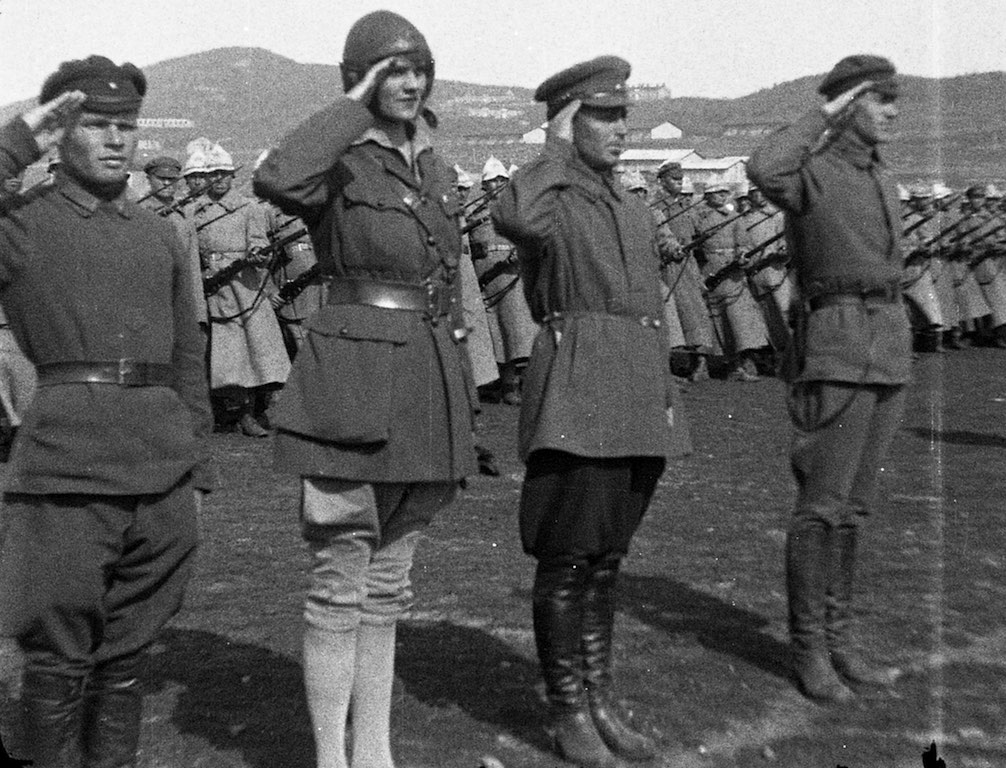 When the United States entered World War II, Walter Baker left the lecture circuit and became a fireman for Union Pacific, out of Laramie, Wyo. (“where a train passed through every five minutes during the war”). Aloha Baker continued lecturing, but “theaters were no longer booking programs like mine. I had to work in school auditoriums and club rooms, and the lecture season was very short.” So she returned to Laramie, and the Bakers built a motel, which they operated until a year after the end of World War II.
When the United States entered World War II, Walter Baker left the lecture circuit and became a fireman for Union Pacific, out of Laramie, Wyo. (“where a train passed through every five minutes during the war”). Aloha Baker continued lecturing, but “theaters were no longer booking programs like mine. I had to work in school auditoriums and club rooms, and the lecture season was very short.” So she returned to Laramie, and the Bakers built a motel, which they operated until a year after the end of World War II.
That’s when they decided to settle in California. They spent several years looking over the state from top to bottom and chose Lido Isle.
Since then, she has lived with her memories–and a dream to someday write about them. She did a book for young adults entitled “Call to Adventure” in 1939, but she has long yearned to do it in more detail. In the early 1970s, a Canadian friend helped Baker edit her film library to give to museums and the Library of Congress and at the same time organized written notes and documents and photographs. From this mass of material, Baker wrote 1,200 unwieldy pages of text. Two years ago, she asked Santa Ana writers Vi and Don Smith to shorten and tighten the manuscript. As a result, a book tentatively titled “The Driving Passion” soon will be ready.
JOSEPH N. BELL
